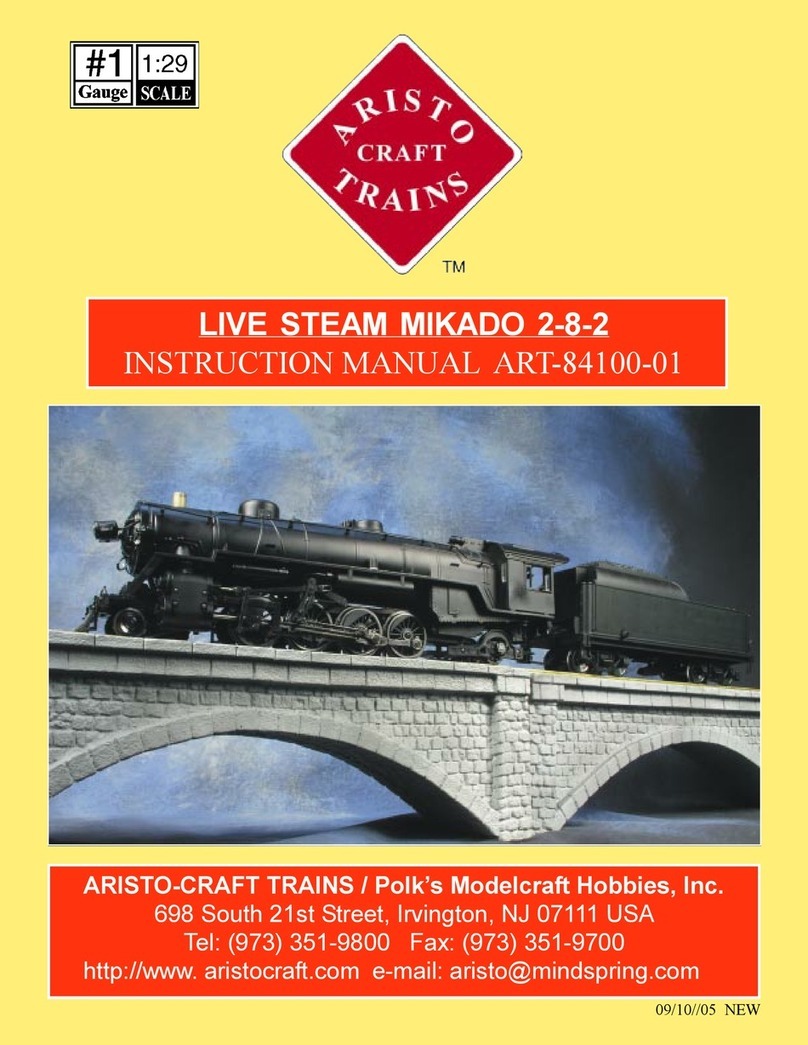Page 8
Adding Lubrication
The next step is adding steam oil to the loco . . .
This locomotive is a steam vapor-propelled device and as such REQUIRES A HIGH-
TEMPERATURE LUBRICATING STEAM OIL ONLY!
The steam oil is not necessarily included in the package, but should be found at the same retailer that
has sold you the locomotive and/or from Aristo-Craft itself.
Two syringes are included with this locomotive for fill and removal of steam oil. Ignore the one-time
use label as this note is for medical use only.
NOTE! The fill of the oil is done in stages and the cover of the oil fill tube needs to be screwed closed
after the oil is inserted each time the process is done. Move the locomotive forward only, not in
reverse, to push the oil into position. Repeat this process two or three times and on the last fill tighten
the access cover securely. A total of 4 ml of oil, as indicated on the syringe side, is the most oil that
should be added at least every second run depending on the lengths of the runs.
The lubrication, after the fill, is continuous and automatic during the operation of the locomotive.
After operation, any used oil remainder needs to be sucked out via the same type of syringe used to
fill the oil reserve shown and needs to be refilled at least every two runs.
DO NOT RUN WITHOUT THE REQUIRED STEAM OIL!




























